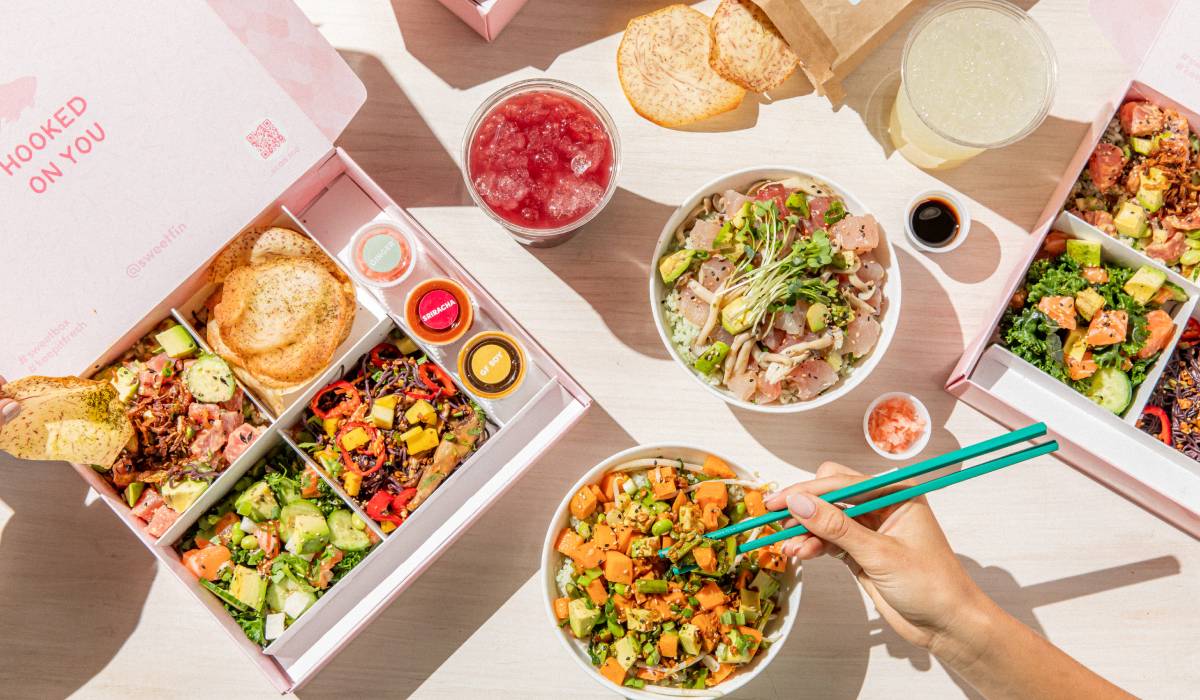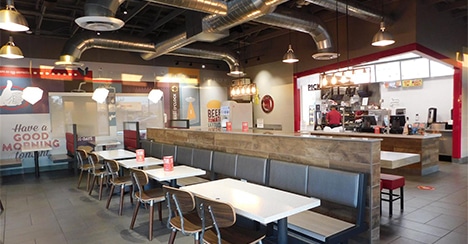Jack in the Box is reaching a “turning point” in its efforts to add new locations and expand its footprint, CEO Darin Harris says. The brand in early March inked two deals to enter Arkansas, where it’s never been before, and Florida, where it hasn’t had a presence in over three decades.
Those deals came on the heels of four development agreements that were signed in Q1, which will see the burger chain further develop its existing St. Louis, Hawaii, and Nashville markets. The recent agreements brought three new operators into the system. They are among the brand’s first new franchisees in over a decade.
“Starting essentially from scratch, we have built our new restaurant pipeline by accelerating existing and new development commitments, and approving more sites over the past year than we did in the prior three years,” Harris said during the company’s Q1 earnings call, noting that it currently has 72 agreements for more than 300 restaurants.
Harris said the St. Louis agreement is notable because that market saw 17 franchise restaurants close last year. Despite being down in unit count, the remaining 47 stores delivered a 10.1 percent increase in Q1 sales. Comps were up 25.5 percent and transactions were up 9.8 percent in the quarter.
“The bottom line is our market optimization strategy is working here,” Harris said. “The franchise business is healthier, and now we have a commitment to build new restaurants in the area.”
Jack in the Box netted five new restaurants in Q1 with six franchise openings and one company-owned closure. Harris said the momentum will continue in the year ahead. He expects the company will return to positive net new unit growth in 2023 for the first time since 2019.
READ MORE:
QSR’s Transformational Brand of 2022: The Rebirth of Jack in the Box
Jack in the Box Racks Up Growth Milestones
Before it started bringing new operators into the fold, Jack in the Box focused on giving its existing base of franchisees an opportunity to grow. As a result, 65-70 percent of the system has signed up for growth within existing markets.
“We feel good about where we are in the process,” Harris said. “We believe there’s more to come by the next quarter, and this is an indication of what’s in front of us.”
A new flexible restaurant prototype is sparking interest from franchisees. The brand’s first drive-thru-only location opened in Tulsa late last year and is outperforming expectations with approximately $50,000 in weekly sales. Harris said 20 percent of those sales are coming through digital channels, compared to 10 percent systemwide, and the new prototype costs up to 20 percent less to build than traditional restaurants.
A reimaging program for the burger chain also is garnering interest from franchisees. There currently are 589 restaurants submitted by franchise owners to participate, 47 of which are now in the design and permitting stage. A dozen company-operated restaurants have been approved for the new image, three of which are expected to be completed by the end of the year.
Stores that have been remodeled over the past two years are benefiting from a 14 percent sales lift, which is 8 percent higher than non-remodel control locations during that same timeframe.
“We believe that remodeling will continue to build and have even more impact as consumer traffic and commute patterns return to more pre-COVID norms,” Harris said.

“Technology innovation such as automation and voice AI are a small part of our multi-year technology roadmap that is also focused on stabilizing core platforms and modernizing outdated legacy applications,” said Jack in the Box CEO Darin Harris.
Jack in the Box currently has 2,186 restaurants, including 2,046 franchise units and 140 company-owned units, up from 2,181 units at the end of Q4. The brand has hovered around the 2,220 unit threshold for nearly a decade, but Harris has his sights set on soaring past 6,000 restaurants in the future. To that end, the company has taken several steps to improve its four-wall economic model and make it more compelling for franchisees to open restaurants.
One area of focus is pricing discipline, something Harris said has improved over the past year, thanks to new analytical tools that allow for more surgical and strategic actions.
“The way I think about our franchise-level economics right now is that all of us in the industry have been faced with these dramatic headwinds with commodities,” Harris said. “We’re not able to take enough price in the near-term to overcome it.”
Other efforts to improve store profit margins include investments in equipment and technology to simplify operations. As an example, Harris pointed to a three-in-one toaster, cheese pump, and Hydra Rinse shake machine. Half of the system has installed the cheese pump, and half of the system will have the Hydra-Rinse machine installed by mid-April.
Equipment updates and process improvements, along with supply chain synergies, are giving Jack in the Box a “clear line of sight” into 200 basis points of margin reduction, with potential savings of $50,000 to $55,000 per restaurant, according to Harris. He cautioned that those benefits won’t materialize overnight, though.
“This is about adding up incremental opportunities that eventually breakthrough and become a big number,” he said. “It’s five or 10 things that we’re doing over time, and once you add them all up, they lead to 200 basis points. It’s not one or two things that very quickly enhance the bottom line.”
Jack in the Box is exploring automated frying and drink-making technology. It introduced a fry-cooking robot at a store in California last year and plans to expand the pilot to an additional store in Texas later this year. It also is learning from Del Taco’s AI voice ordering initiative, which has brought about improvements in labor productivity and upsell rates.
“Technology innovation such as automation and voice AI are a small part of our multi-year technology roadmap that is also focused on stabilizing core platforms and modernizing outdated legacy applications,” Harris said. “We continue to implement our plans to replace our current systems over the next year so we can turn our attention to more innovative solutions.”
Efforts to bolster staffing levels are helping Jack in the Box stores stay open longer. Franchisees are within one hour of pre-pandemic operating hours, and approximately 70 percent of Jack in the Box stores are managing to keep their dining rooms for 12 or more hours a day. Harris said the improvements in staffing and operating hours, combined with a training program to improve execution and speed of service, correlated with same-store sales.
Comps were up 7.8 percent at Jack in the Box in Q1, including 12.6 percent at company-operated stores and 7.4 percent for franchises. Company-operated restaurants experienced growth in both average check and traffic while franchise restaurants had growth in average check, partially offset by a decline in traffic.
Same-store sales at Del Taco increased 3 percent, including 3.1 percent at company-operated stores and 2.8 for franchises, driven by the brand’s 20 under $2 value platform and 11.9 percent menu pricing.
Del Taco in Q1 had a net increase of one restaurant, including two franchise openings and one company-operated closure. It ended the quarter with 591 restaurants, including 273 company-owned locations and 319 franchise units. The quick-service Mexican chain signed two additional development agreements for 10 new restaurants in Florida. In December, 16 restaurants were refranchised to an existing Jack in the Box operator in California. The transactions included a development agreement for 16 new stores to be built in the state in the near future.
A new “Fresh Flex” Del Taco prototype is generating interest from franchisees, much like the company’s new Jack in the Box store model. The first location opened a little over a year ago in Orlando and has continued to shine with weekly sales around $50,000. The brand’s second Fresh Flex location opened in Tampa is generating strong weekly sales around $45,000. A drive-thru only version of the prototype currently is under construction in New Mexico and is expected to open this spring.








